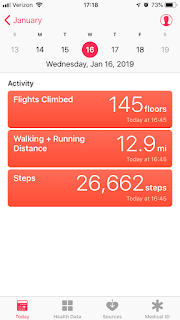Howdy, ya'll!
Welcome to the Mojave Broadband Seismic Experiment blog. This blog will follow the field campaign to deploy and maintain 19 broadband seismic sensors in the Mojave Desert. I, Rob Porritt, a postdoc at UT Austin will probably be doing most of the posting, but everyone in the field teams are encouraged to contribute.
The experiment is designed to test the mode of deformation in the lower crust in a relatively young fault system and is funded by the Southern California Earthquake Center (SCEC). The multi-disciplinary team from UT Austin (Prof. Whitney Behr and Prof. Thorsten Becker) and the University of Colorado, Boulder (Prof. Vera Schulte-Pelkum) will use the data recorded by the experiment for fine-scale imaging of the active fault system and compare our results with information derived from mantle xenoliths.
 |
| Google Earth map of the sites. The line is situated between Needles, CA and Barstow, CA. |
The experiment is a linear array of sensors placed at a spacing of 2-4km on hard-rock sites with little alluvium cover. This should produce a high signal to noise ratio, necessary for many detailed seismic analyses.
This experiment will be the first deployment of a portion of a new UT Austin broadband seismic pool. The major components include a weak motion velocity sensor (seismometer) called an MBB2 and an analog to digital recorder called a Minimus. These are two state of the art pieces of equipment in passive seismic recording. The MBB2, from Metrozet, a division of Kinemetrics, is the latest sensor available and has a typical broadband flat response between 120 seconds and 160 Hz in a form-factor approximately the size of a soda can. The Minimus, from Güralp, is a compact datalogger which hosts a wide-array of built in sensors including an accelerometer, a magnetometer, and thermometer, and has 64Gb of built-in recording capabilities.
 |
| A Metrozet MBB2 broadband seismometer and Rob's hand for scale. |
 |
| 5 Güralp Minimus digitizers having their firmware updated. |
In October, 2017, I traveled to the field site to prepare the permitting. The region is beautiful in its simplicity. There are gently rolling hills with pebbly rocks forming the desert pavement. Dry riverbeds wind their way around these hills and hopefully won't flow too high and flood our stations.
 |
| A scene from my field siting in October. Apparently, I found the refrigerator that Indiana Jones used to survive a nuclear blast. |
 |
| From the top of a hill of rocks. |
I'm writing this post Sunday night (4/22) as we prepare to start the deployment Monday (4/23). Our sensors are waiting for us in Los Angeles, where we'll pick them up and prepare to put them out to their homes for 2 years.
 |
| Waving goodbye to our seismometers on their palette to Southern California |








Useful Information, Thank you for sharing these, its so helpful.
ReplyDeletegeophysical vibrator
Vibrator Spare Parts
Excellent blog, many thanks for providing this important post. Please continue to share posts with this kind of useful information. custom erp
ReplyDelete